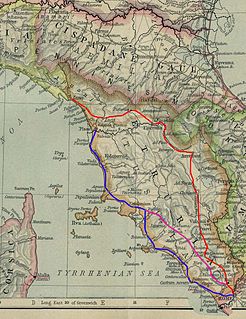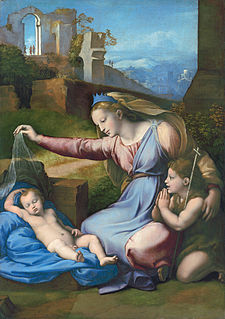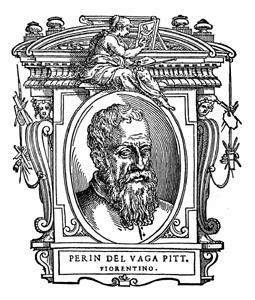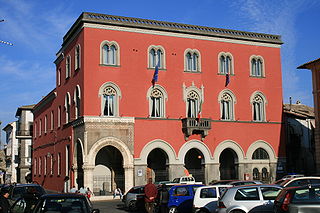
Pope Clement XIII, born Carlo della Torre di Rezzonico, was head of the Catholic Church and ruler of the Papal States from 6 July 1758 to his death in 1769. He was installed on 16 July 1758.

Pope Gregory XV, born Alessandro Ludovisi, was head of the Catholic Church and ruler of the Papal States from 9 February 1621 to his death in 1623.

Pecorino Romano is a hard, salty Italian cheese, often used for grating, made with sheep's milk. The name "pecorino" simply means "ovine" or "of sheep" in Italian; the name of the cheese, although protected, is a simple description rather than a brand: "[formaggio] pecorino romano" is simply "sheep's [cheese] of Rome".

L'Osservatore Romano is the daily newspaper of Vatican City State which reports on the activities of the Holy See and events taking place in the Church and the world. It is owned by the Holy See but is not an official publication, a role reserved for the Acta Apostolicae Sedis, which acts as a government gazette. The views expressed in the Osservatore are those of individual authors unless they appear under the specific titles "Nostre Informazioni" or "Santa Sede".

Giulio Romano, also known by his real name of Giulio Pippi, was an Italian painter and architect. He was a pupil of Raphael, and his stylistic deviations from high Renaissance classicism help define the 16th-century style known as Mannerism. Giulio's drawings have long been treasured by collectors; contemporary prints of them engraved by Marcantonio Raimondi were a significant contribution to the spread of 16th-century Italian style throughout Europe.

The Via Clodia was an ancient high-road of Italy. Situated between the Via Cassia and the Via Aurelia, it is different from them notably in that the latter were designed primarily for military long-haul, irrespective of settlements they met, but the Via Clodia was of short-range, intended for commercial traffic with the colonies in Etruscan lands.

Giuseppe Bottai was an Italian journalist, and member of the National Fascist Party of Benito Mussolini.

Gianfrancesco Penni (1488/1496–1528), also known as Giovan Francesco, was an Italian painter. His brother Bartolommeo was an artist of the Tudor court of Henry VIII, and another brother, Luca, ended up as one of the Italian artists of the School of Fontainebleau.

Lake Martignano, is a small lake in Lazio, Italy 24 kilometres (15 mi) north-north-west of Rome, in an extinct crater or maar. Administratively its coast is divided amongst the municipalities of Rome, Anguillara Sabazia and Campagnano di Roma.

Perinodel Vaga was an Italian painter and draughtsman of the Late Renaissance/Mannerism.
Listín Diario is one of the leading newspapers in the Dominican Republic, and the oldest still being published.

Antoniazzo Romano, born Antonio di Benedetto Aquilo degli Aquili was an Italian Early Renaissance painter, the leading figure of the Roman school during the 15th century.

Campagnano di Roma is a comune (municipality) in the Metropolitan City of Rome in the Italian region Latium, located about 30 kilometres northwest of Rome. It was first mentioned in 1076, having been carved out of the great estate assembled on the Roman pattern by Pope Adrian I, ca. 780, his Domusculta Capracorum. In medieval times, Campagnano di Roma was on the via Francigena. Here, Sigeric, Archbishop of Canterbury, sojourned on his return journey from Rome about 990.
The Secretariate of Briefs to Princes and of Latin Letters, or simply the Secretariate of Briefs, was one of the offices of the Roman Curia abrogated in 1967 during Pope Paul VI's reform of the Pontifical court. It was divided into two sections.

Sibilla Aleramo was an Italian feminist writer and poet best known for her autobiographical depictions of life as a woman in late 19th century Italy.
The Pontifical Roman Seminary is the major seminary of the Diocese of Rome. It is located at the Archbasilica of Saint John Lateran.

Pietro Ostini was an Italian papal diplomat and Cardinal.
Cosma Orsini was an Italian Roman Catholic bishop and cardinal.
Francesco Valesio was an Italian diarist and archeologist.













